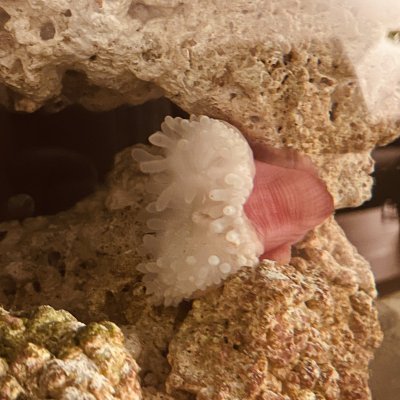Hi guys, totally new to this hobby and have a concern. I have a bio cube 32 and added my first anemone a week ago. The tank is simple. just a small clown and diamond gobby, plus CUC and a cleaner shrimp. The tank is newer but was started with 15 year old rock that was thriving and it completely cycled in 72 hours. T was two months ago. All parameters seems in line with actually 0 amn, nit, nat. green, purple and brown algae present and in control.
The first few days the anemone looked amazing but tended to move to lower areas and under overhangs. The last three days, he's completely upside down under a rock and has not shown his tentacles for three days. he's seems still attached well, I fed a little reef rods and no change at all. Interesting enough, my one very small coral frag (added a month ago) seemed to shrink up completely the same day and has come back out at all. They were never close to each other. any advise? I can't get the the bubble anemone to look into its mouth.
The first few days the anemone looked amazing but tended to move to lower areas and under overhangs. The last three days, he's completely upside down under a rock and has not shown his tentacles for three days. he's seems still attached well, I fed a little reef rods and no change at all. Interesting enough, my one very small coral frag (added a month ago) seemed to shrink up completely the same day and has come back out at all. They were never close to each other. any advise? I can't get the the bubble anemone to look into its mouth.



















